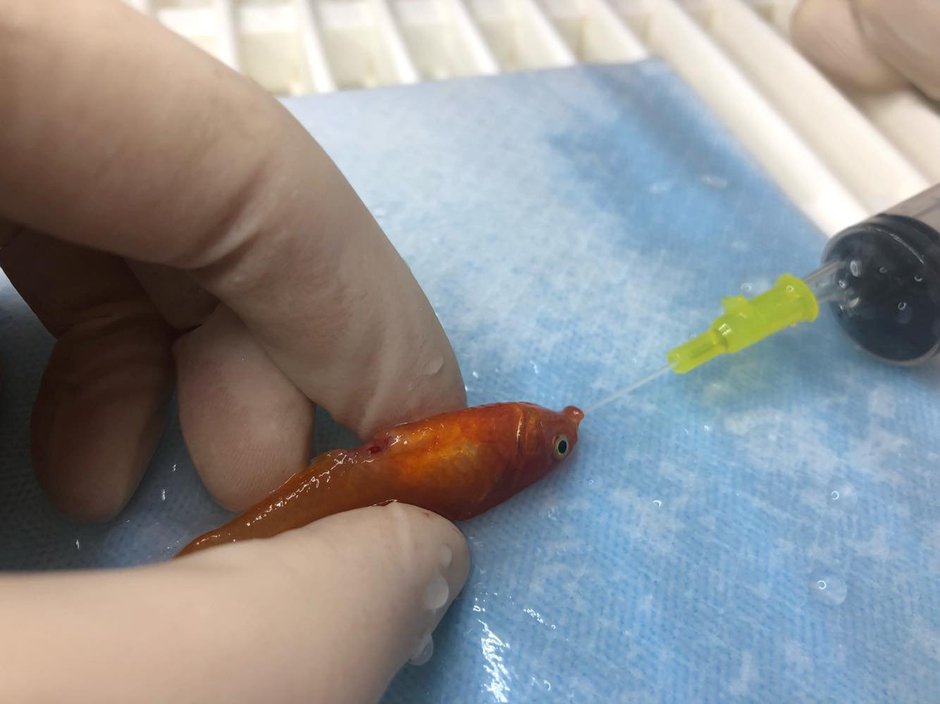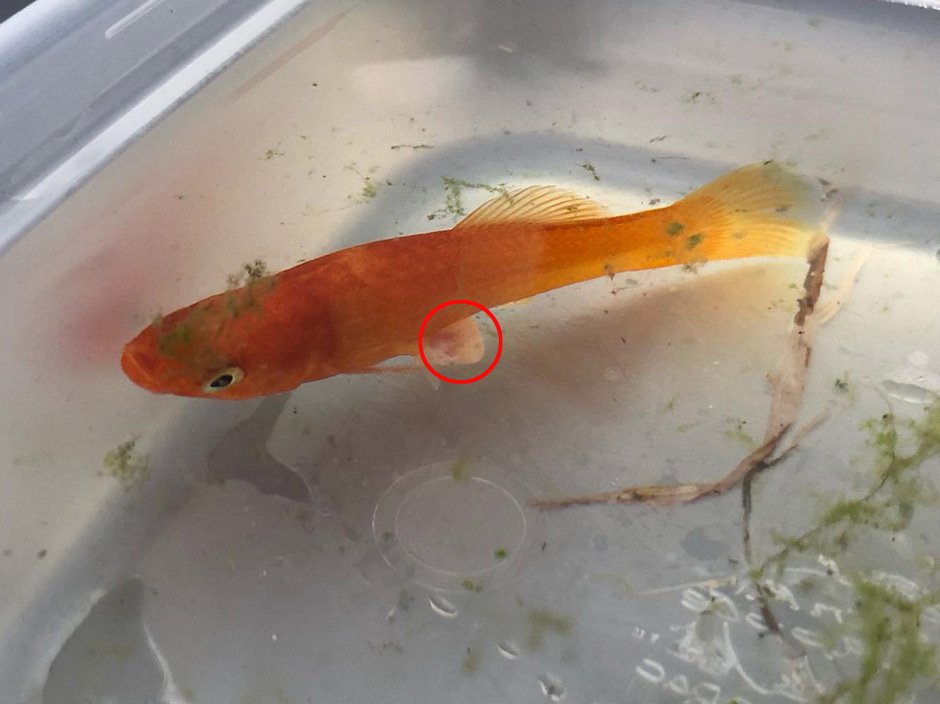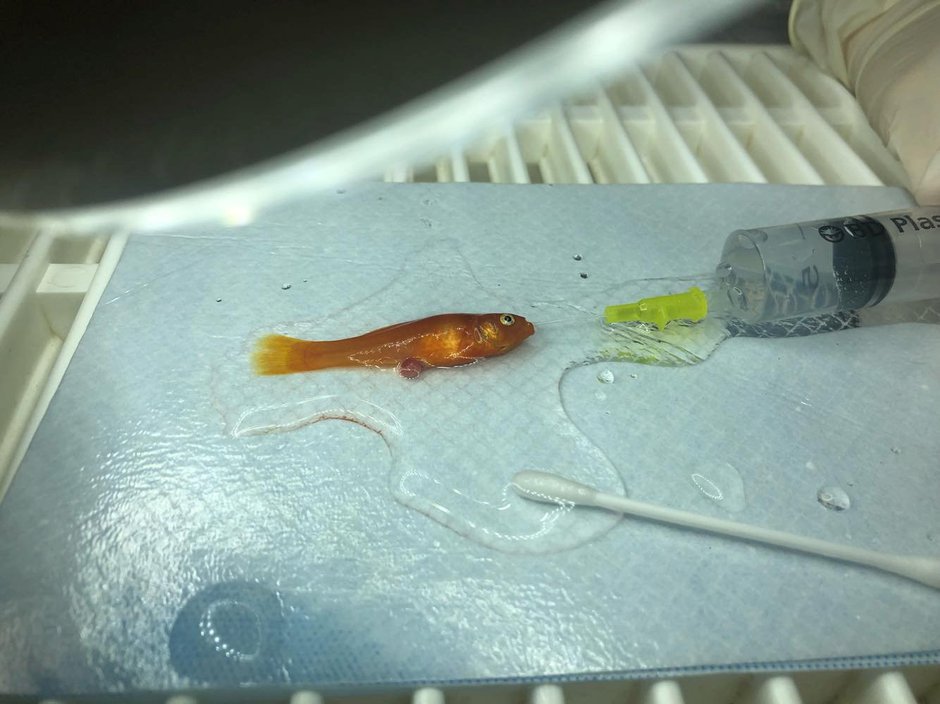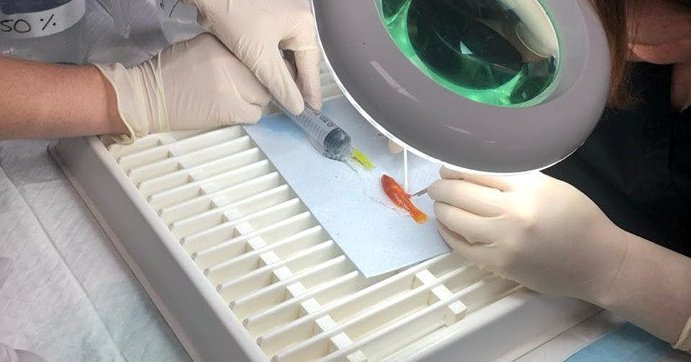 Image by: Matthew Newby SWNS
Image by: Matthew Newby SWNS
A vet has done a UK first by operating on its smallest patient ever after performing a delicate procedure on a ‘gold fish’ — weighing less than A GRAM.
Little Molly – named after its species – was rushed into the practice after its owners noticed a large lump on its belly.
Staff at Highcoft Rabbit, Small Mammal & Exotic Vets, Bristol, immediately diagnosed a tumour and prepared Molly for surgery.
The emergency procedure saw vets catheterised the gold fish’s mouth before anaesthetising the molly and removed the mass within 40 minutes.
The vets – who normally operate on the likes of iguanas, snakes and crocodiles – says the 1g ‘goldfish’ is the smallest animal to go under the knife.
The operation – which cost less than £100 – was hailed a success after Molly woke up within minutes of the anaesthetic being removed and returned home to its tank later that day.
Exotic species vet Sonya Miles said: “It’s not common across the UK to bring your fish to the vets but it is here. We are seeing more and more fish which is great.
“It used to be the odd one or two every few months but more and more people are realising we are happy to see them.
“Although it looks like a goldfish its actually an exotic fish from the molly species although it does look incredibly like a goldfish.
 Image by: Matthew Newby SWNS
Image by: Matthew Newby SWNS Image by: Matthew Newby SWNS
Image by: Matthew Newby SWNS Image by: Matthew Newby SWNS
Image by: Matthew Newby SWNS
“A couple had been given the molly fish by an elderly neighbour but after a few weeks they noticed a lump on her underbelly and brought her in.
“It was definitely the smallest animal we’ve seen here. It barely registered on our scales.
“Both modern and veterinary medicine has advanced over time so we’re able to perform
“It’s a pretty simple procedure and took no longer than thirty or forty minutes. We submerged the fish in a container of anaesthetic solution.
“Once the righting reflex is lost and the fish is asleep it was the laid on the operating area.
“The fish is kept wet (which makes the puddle), the mouth is catheterised and different concentrations of anaesthetic are injected over the gills to keep the fish at a stable level of anaesthesia.
“The area covered with a water proof paste as stitching the skin closed isn’t a possibility. The fish was then woken up in fresh oxygenated water.
“The operation was a success as we were able to remove the tumour before it started to upset its balance.
“You definitely have to have steady hands and good eyesight. It was definitely a team effort.
“We’re glad to have been able to help the fish before the tumour started to upset its balance.”
 Image by: Matthew Newby SWNS
Image by: Matthew Newby SWNS


